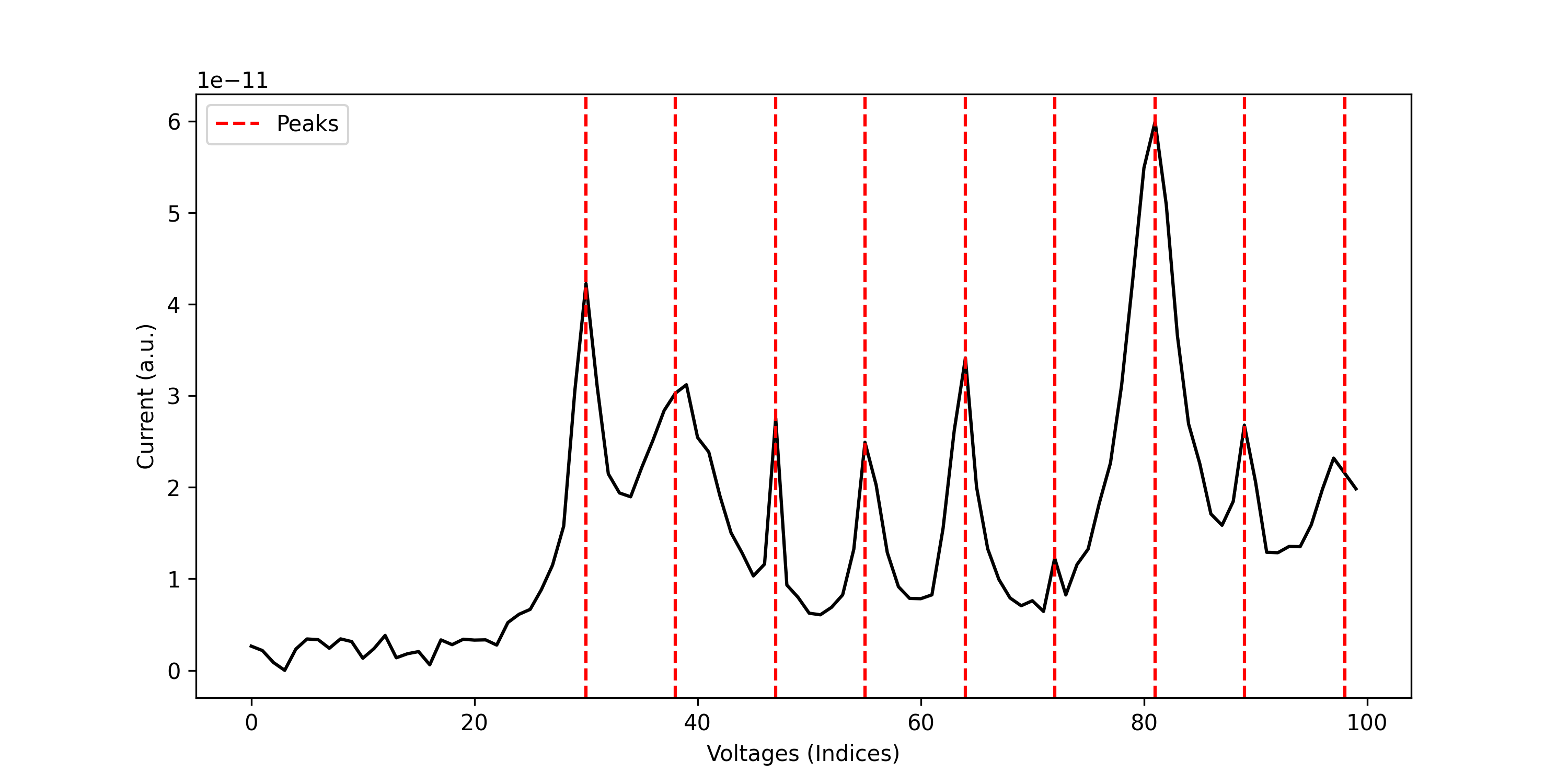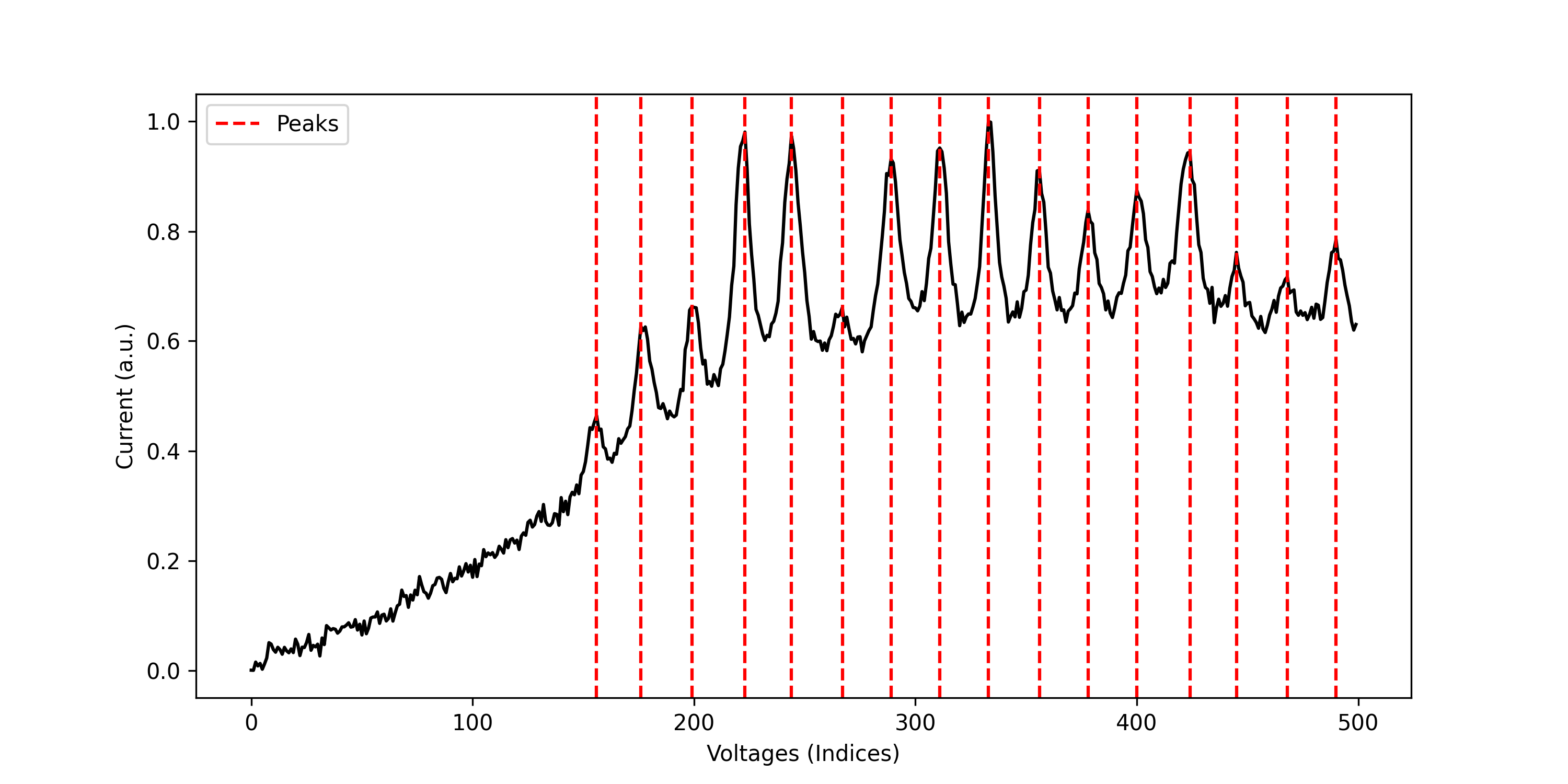Using the Coulomb Blockade Models
Installation
We recommend using pip, poetry, or uv to install the package.
Authentication
The SDK requires an API key for authentication. Sign in and create a new API key. Remember, your API key is your access secret—keep it safe with environment variables.
Using environment variables:
Or provide the API key directly:
Usage Examples
Using the Coulomb Blockade Classifier
The Coulomb Blockade Classifier is a model that can classify a given current measurement as either in the Coulomb Blockade regime or not.
You can download an example file to follow along with the example:
Using the Coulomb Blockade Peak Detector
The Coulomb Blockade Peak Detector is a model that can detect the peaks in a given current measurement.
You can download an example file to follow along with the example:
Plotting the Output

Similarly, for v1 of the Coulomb Blockade Peak Detector, you can download an example file and replace the model name in the example above with coulomb-blockade-peak-detector-v1, and you should see the following output:

v1 is typically more accurate than v0 for larger sweep sizes of one hundred or more points.
Important Notes for Coulomb Blockade Models
- Input dimensions: Input dimensions should ideally match the specified resolution of the model for the best results. You may need to interpolate or downsample your data to match the required shape. You can find the required input shapes for each model on the models overview page.
- Data format: Input data should be a 1D numpy array representing current measurements as a function of gate voltage.
- Output format:
- The classifier outputs a boolean value (
TrueorFalse) indicating whether the measurement exhibits Coulomb Blockade phenomena. - The peak detector outputs a list of indices corresponding to the detected peak locations in the input array.
- The classifier outputs a boolean value (
- Model versions: Higher version numbers typically indicate improved accuracy and performance. For example, v1 of the peak detector is typically more accurate than v0 for larger sweep sizes (one hundred or more points). Check the models overview for the latest available versions.

